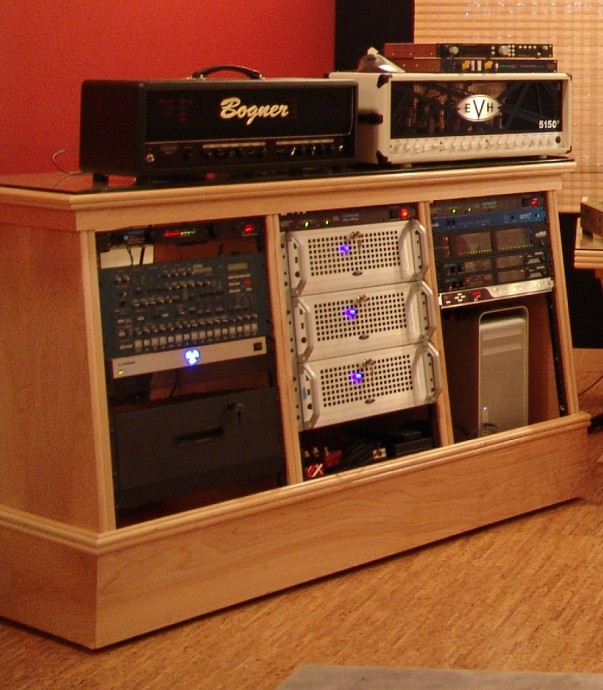


If you hear flutter or slap-back echoes, try placing absorption and/or diffusion panels on the nearest walls or ceiling, looking particularly for parallel surfaces. After finding the sweet spot, clap your hands and listen to the reverberation. Try adjusting the player’s position and your listening position to find the best spot for the player and the mic. Listen for a spot that sounds balanced and natural. Have someone play or sing in a room and walk around the player while covering one of your ears. To identify where the acoustic panels should go in a live room, start by finding the sweet spot. This overhead baffle easily moves up and down on a pulley system to change the tone and ambience of the drums. Sam Pura playing beneath his drum room’s adjustable “drumbrella,” inspired by Eric Valentine. Small rooms are more difficult to effectively treat with diffusion, but breaking up large reflective surfaces will still be helpful in creating a more natural response. Instead, use absorption panels made of 2-inch to 4-inch (5-10cm) thick fiberglass or Rockwool to tame early reflections-especially to treat flutter echoes between parallel walls.ĭepending on the size of your space, you may also need to use diffusor panels to ensure the sound is evenly dispersed around the room. Inexpensive materials like moving blankets and carpet will only absorb high-frequencies and may cause your recordings to sound dull and muddy. With some carefully placed absorption and diffusion panels, you can control the flutter echos and standing waves that make things sound muddy, boxy, metallic, or “boingy.” These rooms allow you to capture natural-sounding performances with the appropriate amount of ambience.īe careful-too much acoustic coverage and you run the risk of sucking the life out of your recordings and making them sound unnatural or boxy. In order to achieve a tonally balanced and lively sound, you’ll need to apply acoustic treatment to 25-50% of the exposed walls in your live room. Different wall, floor, and ceiling materials provide different types of reflections, so if you’re building a room from scratch be sure to plan for the appropriate types of surfaces. You won’t hear any muddiness or bass build-up like you typically hear in the rectangular rooms in your house. The frequency response of a good live room should be balanced, able to support deep lows and detailed highs. Some rooms are designed with different acoustic zones, each with a different tonal or reverb decay. Versatile recording rooms should remain neutral, but not too dry. Vocal booths tend to be “dead” and dry while rooms for recording larger ensembles usually sound livelier and have longer reverb times.
#Sound control room full
When music is performed in these rooms it sounds clear and full, with just enough ambience to remind you that you’re in a real room full of pleasant reflective surfaces. The best rooms for recording live instruments and ensembles complement and enhance the tonal characteristics of a performance. They have the unmistakable ability to sing a performance back to you. You’ll know a good live room as soon as you step foot inside.
#Sound control room how to
In this article, we’ll explain how to set up live rooms and iso-booths to ensure you’re getting the most out of your space. Narration booths require different acoustics than music rooms and a control room must be tuned for accuracy and critical listening.
#Sound control room professional
Many professional recording studios use specialized rooms for different situations large live room for tracking live instruments, smaller iso-booths for drums, and even smaller rooms for tracking vocals and guitar amps. You wouldn’t carve a turkey with a chainsaw, right? Plastering your bedroom with egg cartons of cheap foam is an equally bad idea. Your acoustic space is one of your most important tools when it comes to recording, and the type of acoustic treatment you use directly affects how well-suited your room is for certain recordings.


 0 kommentar(er)
0 kommentar(er)
